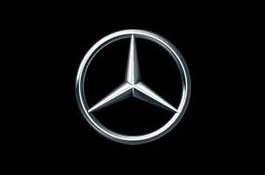luglio 06, 2022 - Mercedes-Benz
2022 Austrian Grand Prix - Preview & Stat Sheet
Comunicato Stampa disponibile solo in lingua originale.
Formula One heads to Spielberg for Round 11 of the 2022 season, the Austrian Grand Prix.
- Toto Talks Austria
- Fact File: Austrian Grand Prix
- Stat Attack: #austria and Beyond
Toto Talks Austria
Austria up next! A quick turnaround is always welcome when you're in a learning race and need track time. It was a spectacular weekend at Silverstone, with amazing support and a more competitive showing. That reflects all the hard work to bring upgrades to the car - and a circuit that played to the strengths of our current package.
Lewis drove a brilliant race with some epic battles. A better result would have been possible if things had played out differently. George certainly had the pace to make up ground from P8. It was a shame he couldn't race, but we're proud of the character he showed after the incident.
I'm looking forward to being back in #austria: it's my home race and a location full of good memories. It's a very different track to Silverstone and one that hasn't always suited us in the past, but the cars have changed drastically since we were last in Spielberg. We'll keep our heads down, prepare the best we can and hopefully we can build momentum from Silverstone.
Fact File: Austrian Grand Prix
- The least amount of time needed for a lap at any of the circuits on the 2022 F1 calendar is at Spielberg. The lap record currently stands at 1:02.939 minutes, set by Valtteri Bottas in 2020. The Red Bull Ring is the fifth-shortest track in F1 at 4.13km, and only Monaco, Zandvoort, Mexico City and Interlagos are shorter. As a consequence, Spielberg regularly produces one of the closest qualifying sessions of the entire year.
- However, the short track length and fast lap times also mean that drivers can post more laps, both in the practice sessions and in qualifying - provided they have enough sets of tyres.
- At Spielberg, the altitude doesn't impact cooling the engine as much as locations such as Interlagos and Mexico City. Instead, the issues stem from the relatively short lap and the consequent lack of time to cool the system down again.
- With just ten corners, Spielberg has the fewest of any of the 22 F1 tracks. At the same time, Turns 2, 5 and 8 are taken at full throttle and are therefore not considered to be corners in the truest sense of the word.
- The track has a steep gradient from side-to-side in places, as exemplified by Turns 3 and 4 where it slopes up towards the apex as the car drives over the crest while accelerating out of the corner. This can result in one wheel leaving the ground, causing issues with braking, stability and traction.
- The Red Bull Ring is a track that puts huge demands on a car's handling while at the same time demanding good mechanical grip at low speeds (Turns 1, 3 and 4) and excellent performance at high speed (Turns 6-7 and 9-10). Ultimately, engineers have to find a compromise when setting up the vehicle and dial in the right amount of downforce.
- Running through the penultimate corner, the very fast Turn 9, drivers are subjected to 4.7g - the sixth-highest figure seen so far this season.
- The difference in elevation of 69 metres between the lowest and highest points at the Red Bull Ring is one of the largest of the season, which is unsurprising given the track's location in the Austrian Alps. The lowest section is on the start/finish straight and the track reaches its highest point in Turn 3.
- The track has three very hard braking zones in succession on the approaches to Turns 1, 3 and 4, and the brakes are unable to cool down sufficiently over the rest of the track, as the lap is relatively short, which impacts the maximum pressure and general wear and tear experienced.
- For that reason, teams have to apply as much cooling as possible to the brakes, so the front tyres hardly get warmed up at all, and as the outlap is very short, tyres can never be properly prepared to be at their best for the start of the qualifying lap. Teams often like to post preparatory laps, which is not possible if you want to do two runs in Q3.
- The Red Bull Ring is notorious for its aggressive kerbs and is considered to be one of the toughest tests for vehicle suspension. This applies especially to the kerbs at the exits of T1, T6 and T7, which take an exceptionally high toll on the cars because of their frequency (i.e. the gap between the highest and lowest points of the kerbs) and the speeds at which they are taken.
- The weather in Styria can be very unpredictable at this particular time of year, with extreme variation in ambient temperatures from very hot to cold and a good chance of thunderstorms. Anything can happen with the weather at the Austrian Grand Prix, and temperatures on Race Day have varied from 16°C to 32°C in recent years.
Further information in the press release to download









































 Inglese
Inglese  Condividi
Condividi Condividi via mail
Condividi via mail  Automotive
Automotive Sport
Sport Events
Events Art&Culture
Art&Culture Design
Design Fashion&Beauty
Fashion&Beauty Food&Hospitality
Food&Hospitality Tecnologia
Tecnologia Nautica
Nautica Racing
Racing Excellence
Excellence Corporate
Corporate OffBeat
OffBeat Green
Green Gift
Gift Pop
Pop Heritage
Heritage Entertainment
Entertainment Health & Wellness
Health & Wellness